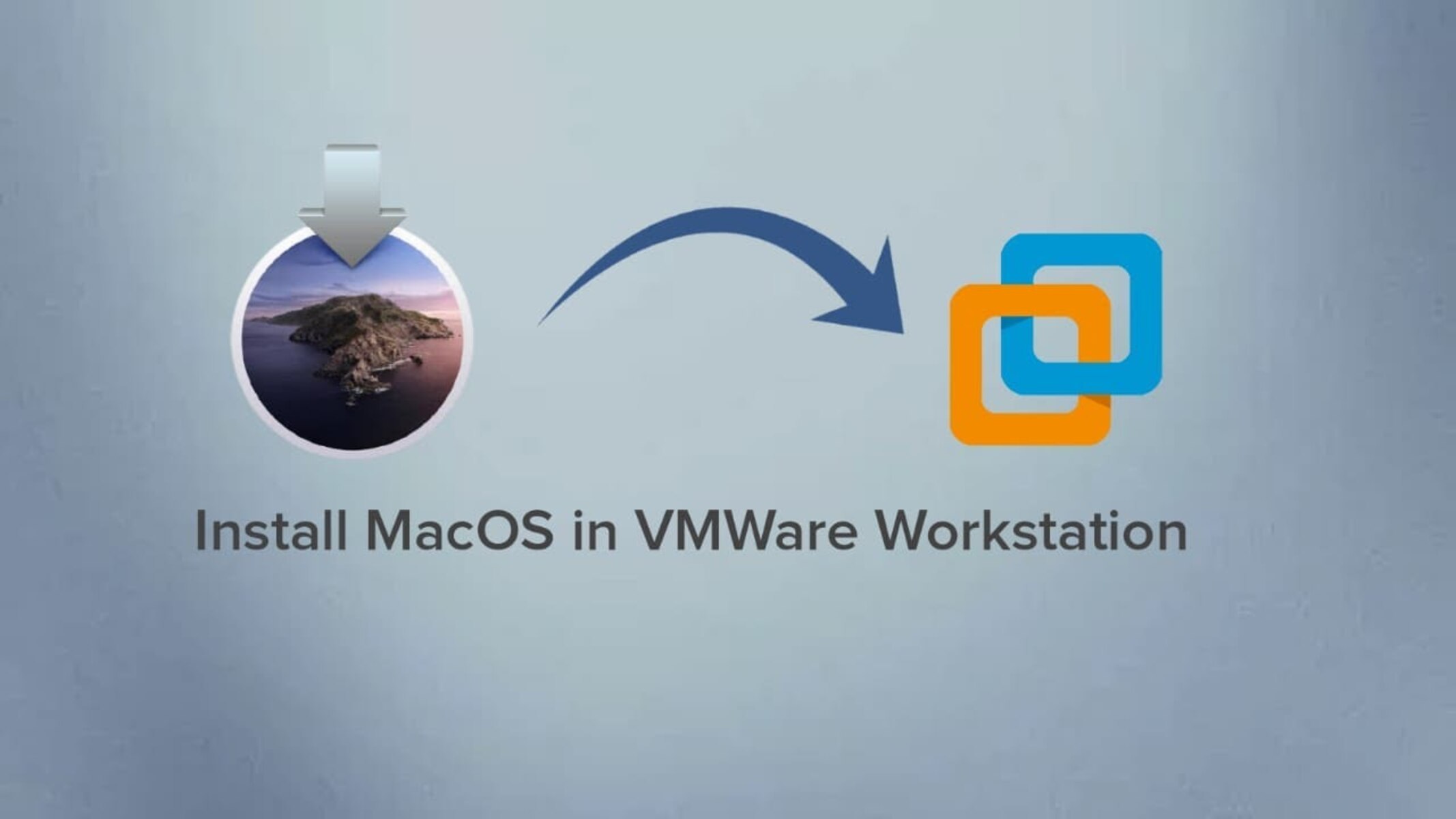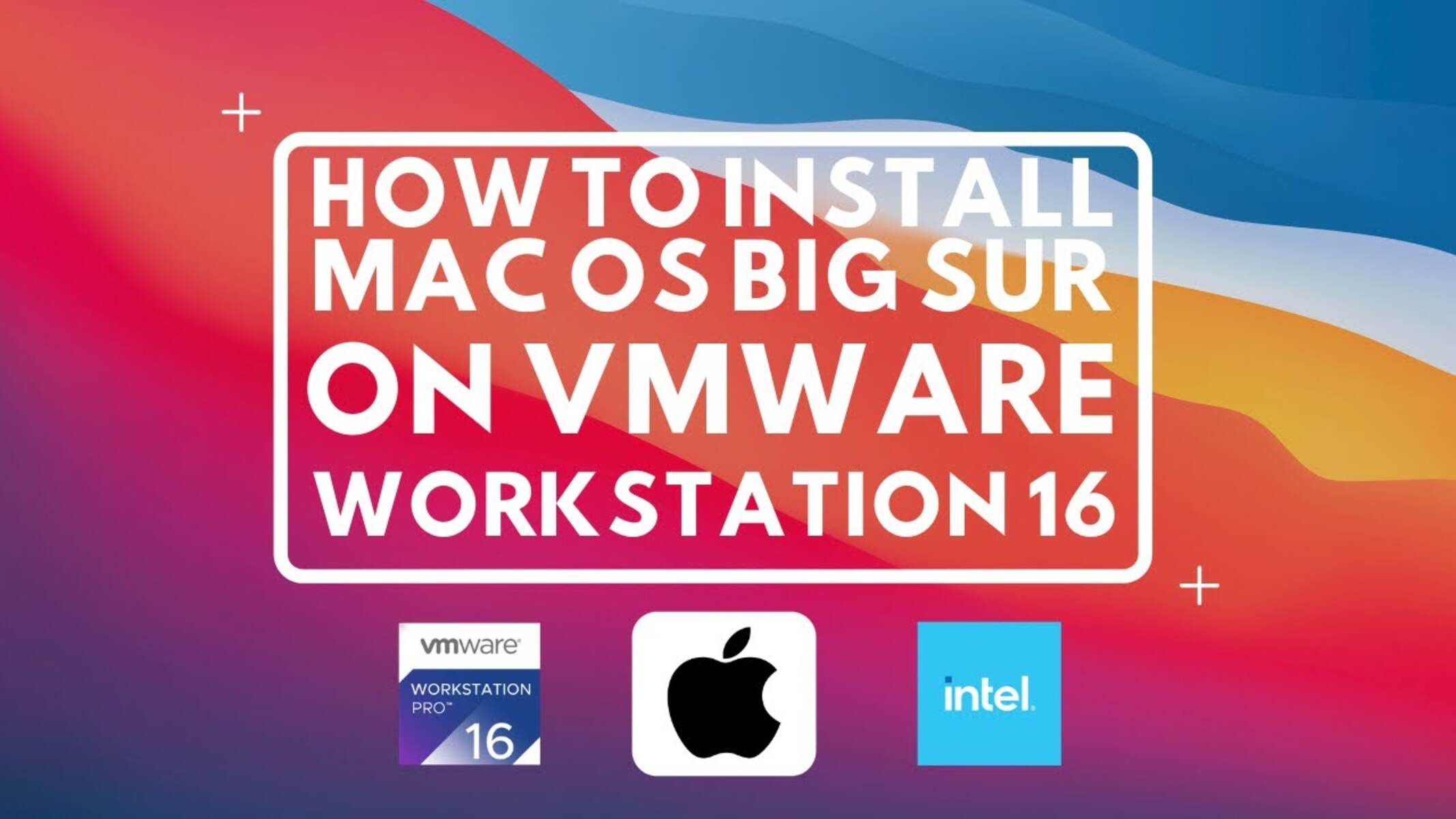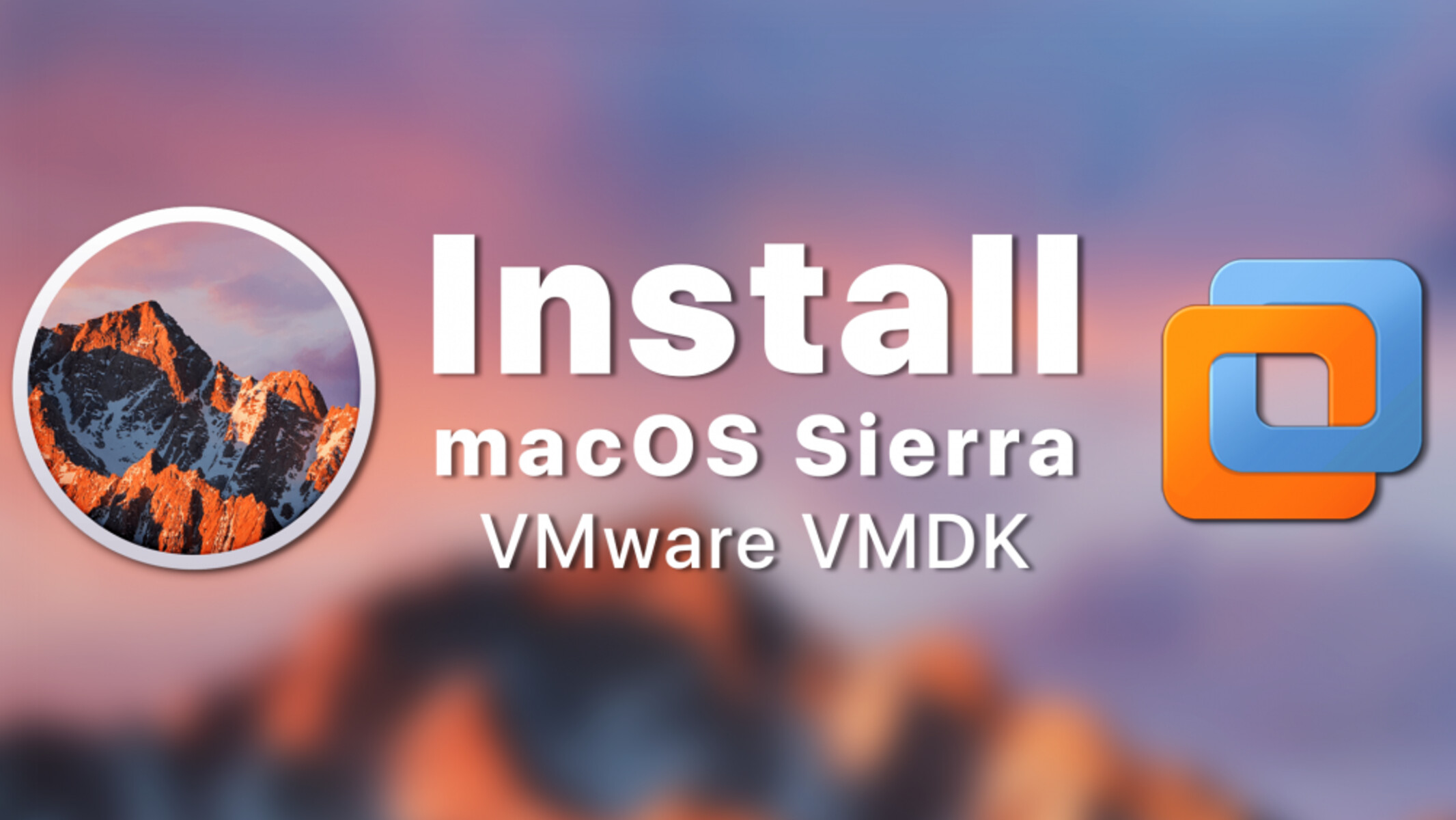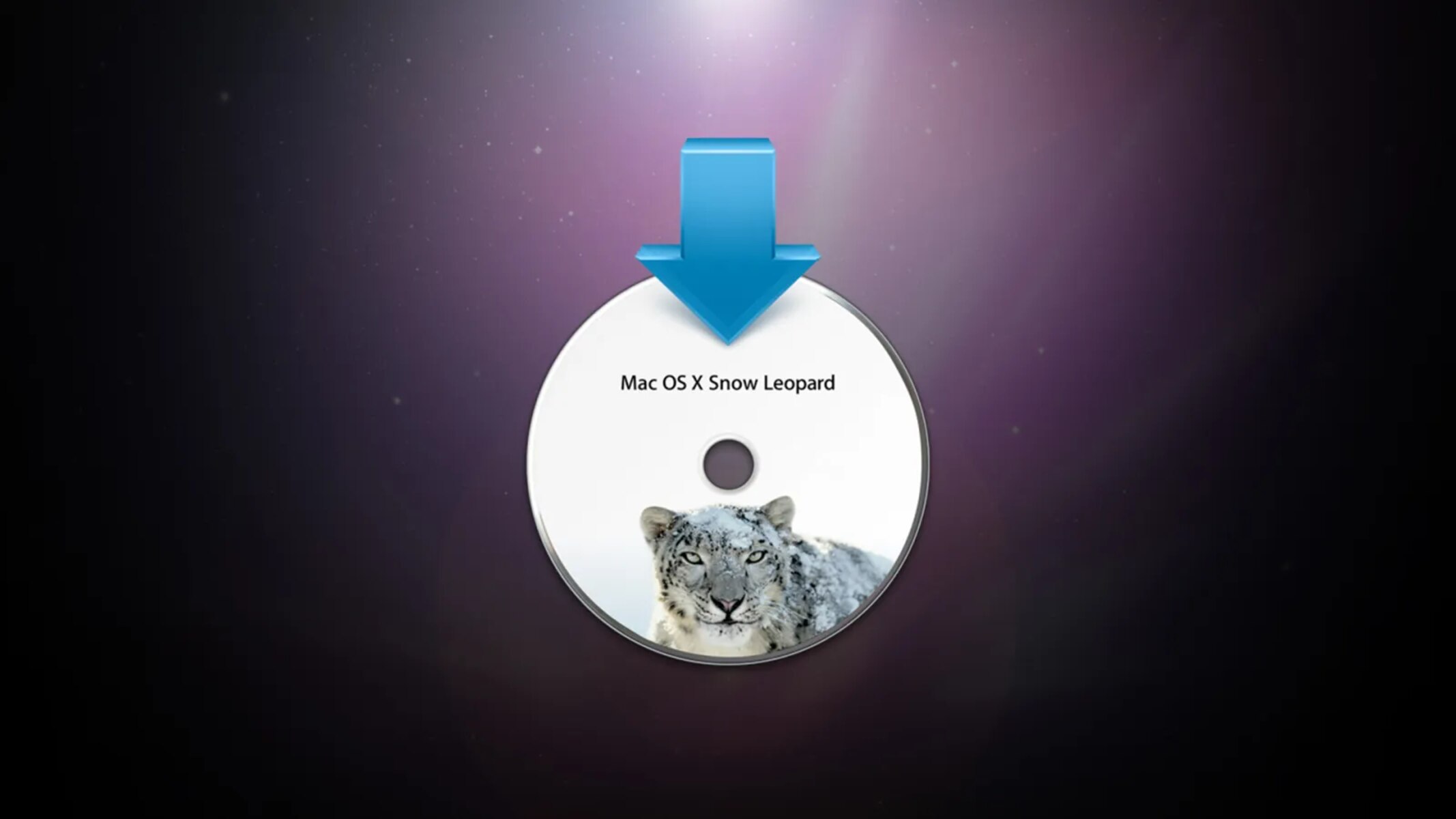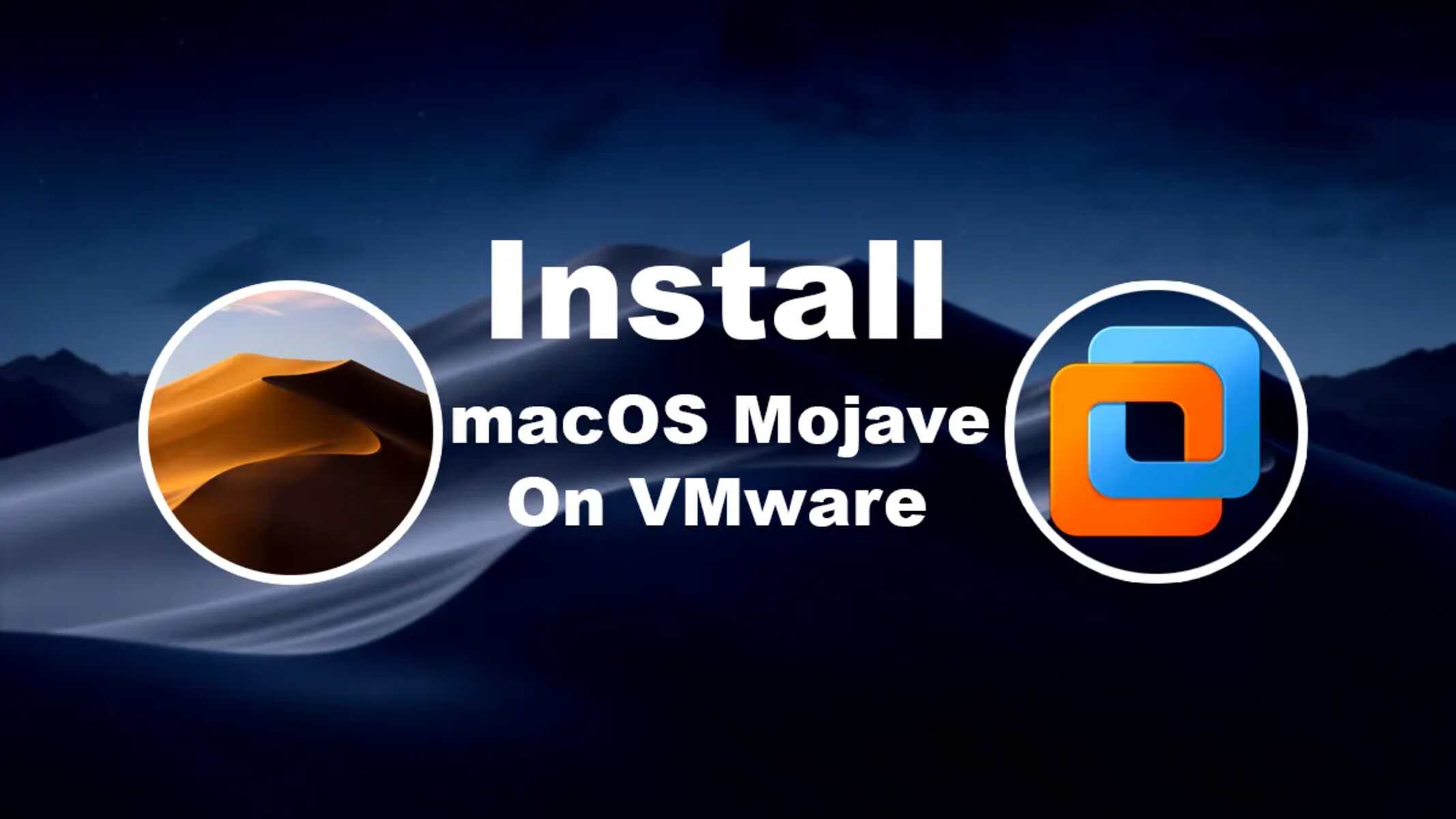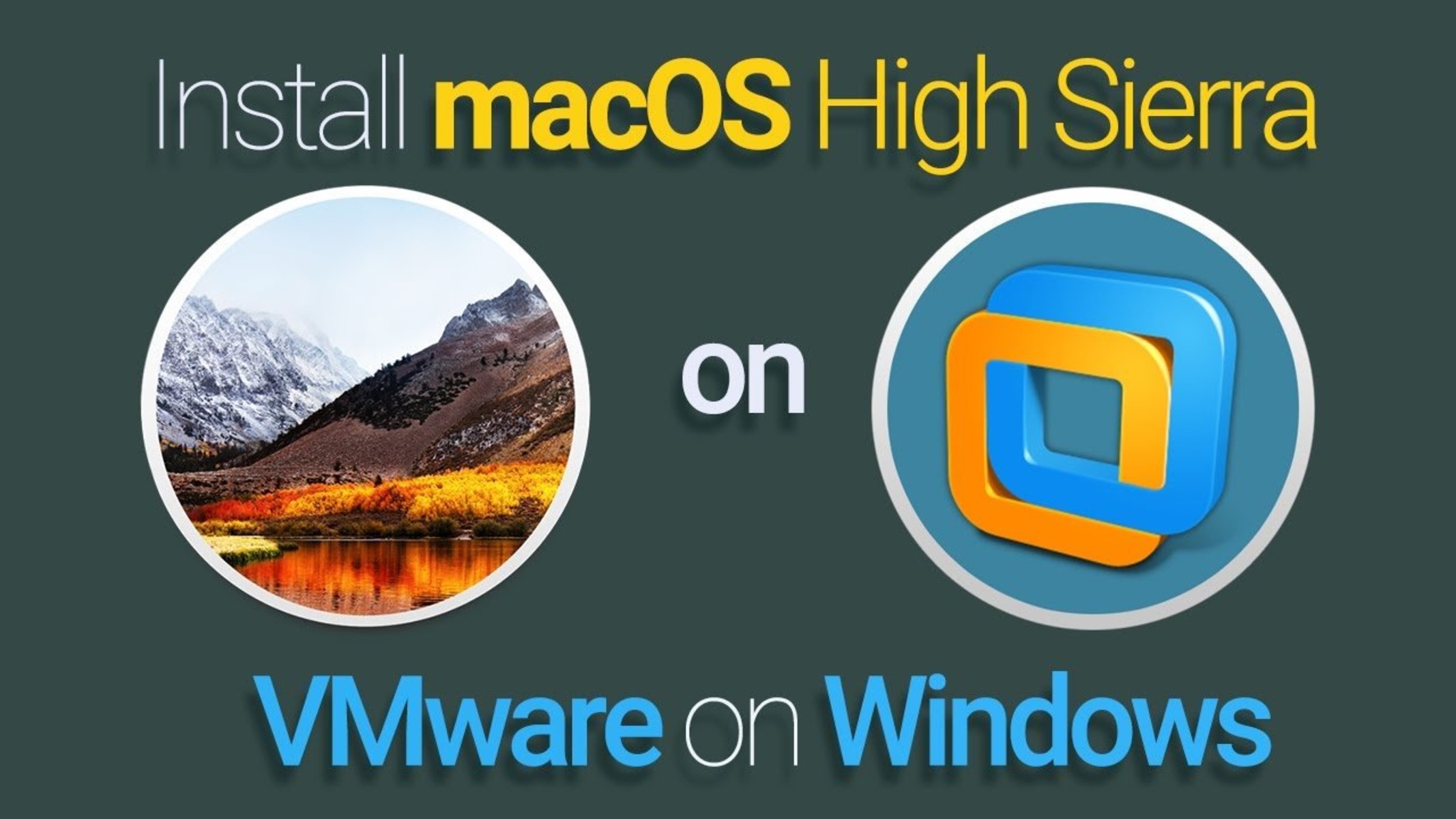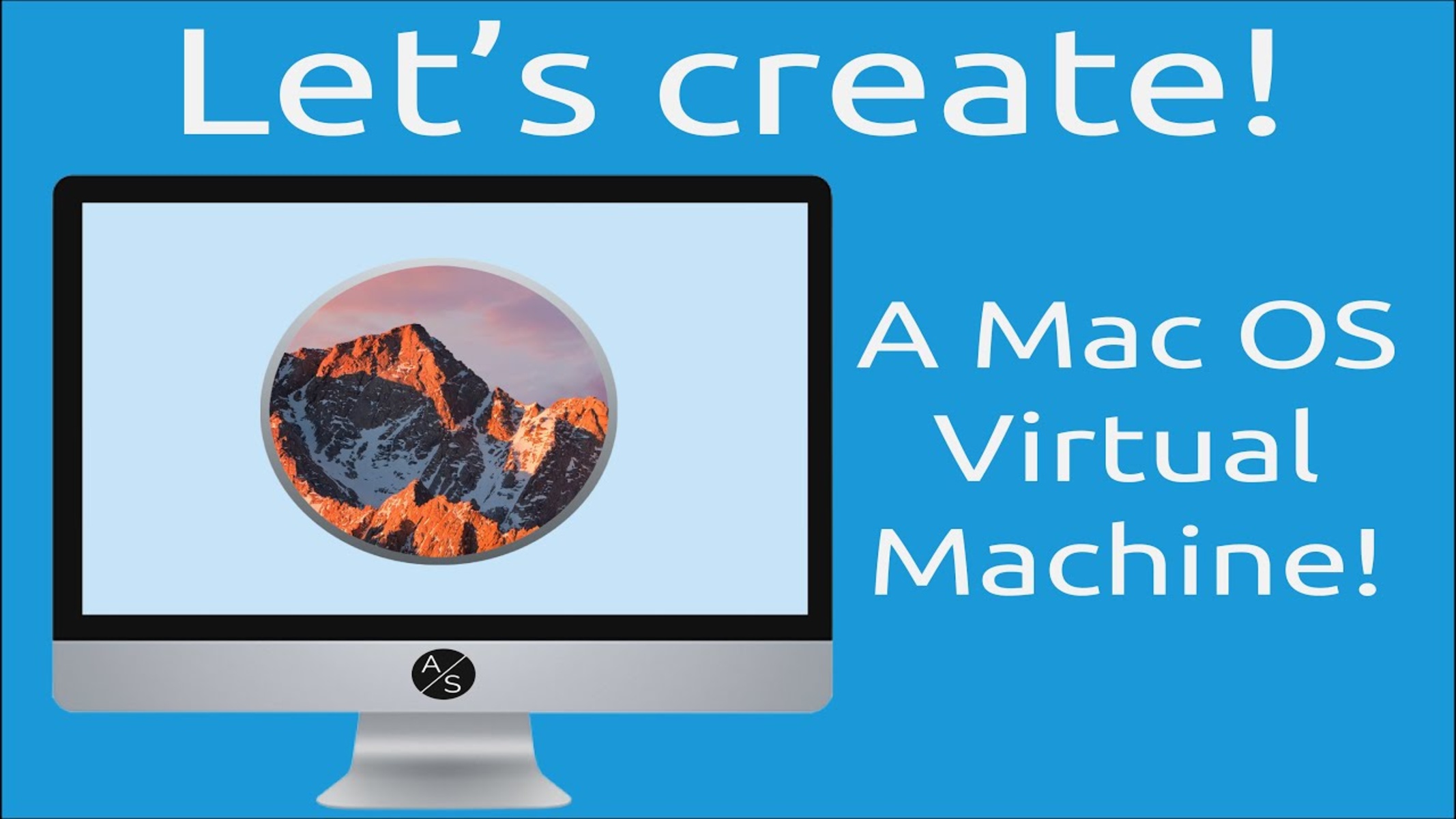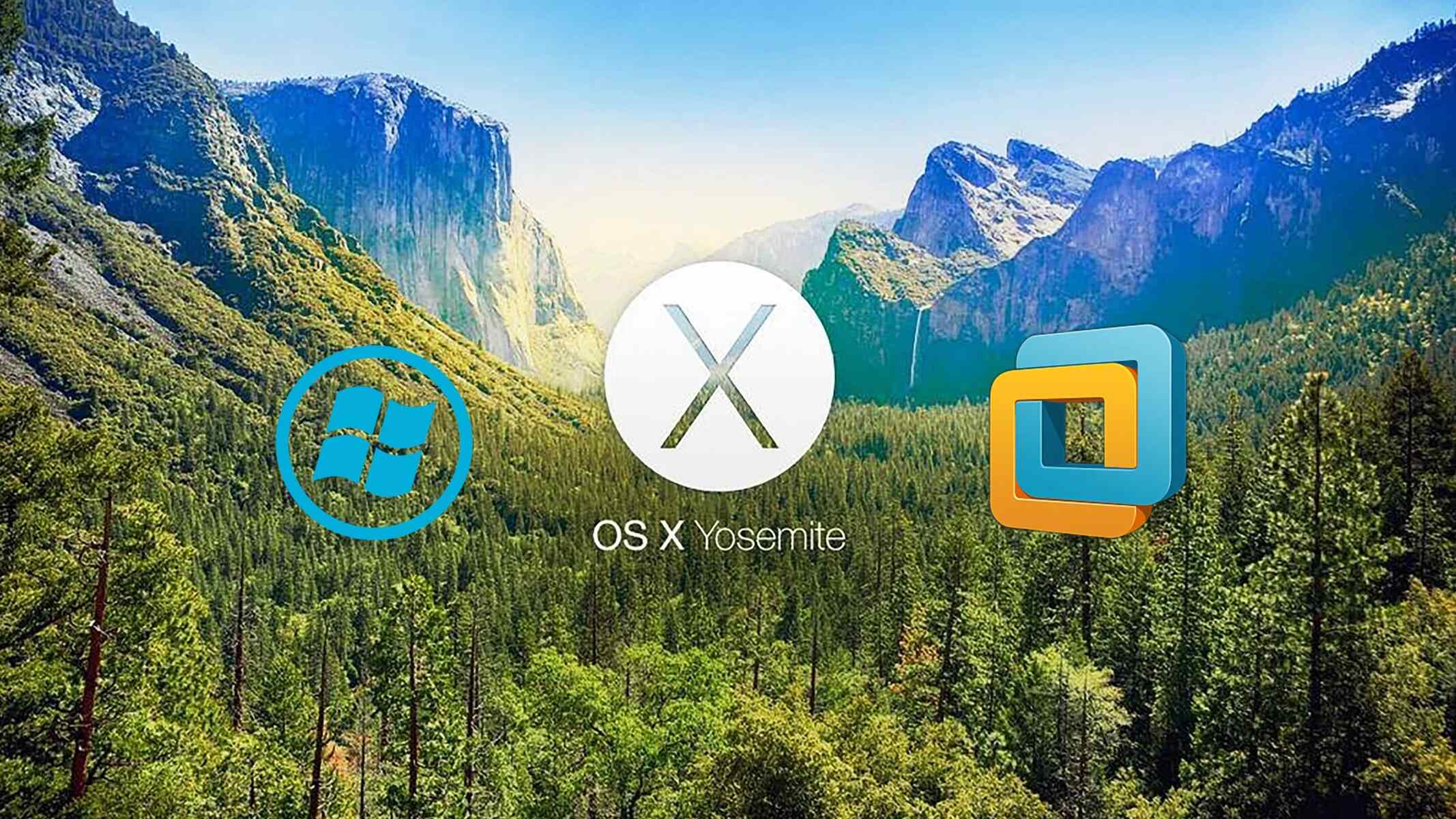Introduction
Welcome to the world of virtualization, where you can run different operating systems on a single machine. If you’re a macOS enthusiast who wants to experience the power and flexibility of VMware Workstation, you’re in luck! In this article, we will guide you step-by-step on how to run macOS on VMware Workstation.
Before we dive into the installation process, it’s important to understand the benefits of running macOS on VMware Workstation. Firstly, virtualization allows you to enjoy the features and functionalities of macOS without the need for dedicated Apple hardware. This is particularly useful for Windows or Linux users who desire a macOS environment for development, testing, or simply exploring the platform.
Furthermore, VMware Workstation provides a stable and secure virtualization platform that ensures seamless performance, allowing you to work with macOS efficiently. Whether you’re a developer, designer, or simply someone who wants to experience the seamless integration and advanced features that macOS offers, running it on VMware Workstation is a perfect solution.
In order to get started, you’ll need to have a few things in place. Firstly, you’ll need to download the macOS ISO image. You can easily find the appropriate macOS version online. Additionally, you’ll need to have VMware Workstation installed on your computer. Ensure that you have the correct version that supports macOS virtualization.
In the next sections, we will guide you through the process of setting up and running macOS on VMware Workstation. We will cover everything from downloading the macOS ISO image, installing VMware Workstation, creating a new virtual machine, configuring the virtual machine settings, installing macOS, and optimizing the performance by installing VMware Tools.
By the end of this article, you’ll have a fully functional macOS environment running seamlessly on your VMware Workstation. Are you ready? Let’s get started!
Download macOS ISO image
The first step in running macOS on VMware Workstation is to obtain the macOS ISO image. The ISO image contains the operating system files that will be installed on the virtual machine. Here’s how you can download it:
1. Open your preferred web browser and search for ‘Download macOS ISO image.’ Look for a reliable source that provides the macOS ISO image for virtualization purposes.
2. Ensure that you choose the appropriate macOS version that you wish to run on VMware Workstation. It’s advisable to select a version that matches your requirements and is supported by VMware Workstation.
3. Once you find a reliable source, navigate to the website and locate the download link for the macOS ISO image. Click on the link to initiate the download process.
4. Depending on the size of the ISO image and the speed of your internet connection, the download may take some time. Be patient and let the download complete before proceeding to the next steps.
5. Once the download is complete, double-check the integrity of the ISO image. It’s essential to ensure that the downloaded file hasn’t been corrupted. You can use checksum tools or compare the file size and hash values provided on the source website to verify its integrity.
6. Place the downloaded macOS ISO image in a location where you can easily access it during the virtual machine setup process. It’s recommended to keep it in a separate folder or directory for convenience.
Now that you have successfully downloaded the macOS ISO image, you are ready to move on to the next step – installing VMware Workstation.
Note: It’s important to download the macOS ISO image from a trusted source to ensure the authenticity and legality of the operating system files. Make sure to comply with any licensing requirements and terms of use associated with macOS.
Install VMware Workstation
With the macOS ISO image downloaded, the next step is to install VMware Workstation on your computer. Follow these steps to get VMware Workstation up and running:
1. Locate the VMware Workstation installer file that you have downloaded. It is usually in the form of an executable file with a .exe extension if you are using Windows or a .dmg file if you are using macOS.
2. Double-click on the installer file to initiate the installation process. If you are prompted with a User Account Control (UAC) dialog on Windows, click “Yes” to grant permission to make changes to your computer.
3. In the installation wizard, carefully read the terms and conditions, and if you agree, select the checkbox to accept the licensing agreement. Click “Next” to proceed.
4. Choose the installation directory where you want to install VMware Workstation. The default location is typically fine, but you can also choose a different location if desired. Click “Next” to continue.
5. On the next screen, review the selected features and components that will be installed with VMware Workstation. You can customize the installation by selecting or deselecting specific features. Once you are satisfied with the selection, click “Next” to proceed.
6. In the next step, you will be asked to choose the default file association for VMware Workstation. You can opt to associate VMware Workstation with certain file types or leave it unselected. Click “Next” to proceed.
7. Finally, you will be presented with a summary of the installation settings you have chosen. Review the information to ensure it is correct. Click “Install” to start the installation process.
8. Wait for the installation process to complete. It may take a few moments for VMware Workstation to be installed on your computer.
9. Once the installation is finished, you will be presented with a completion message. You can choose to launch VMware Workstation immediately or do it later from the Start menu or desktop shortcut.
Congratulations! You have successfully installed VMware Workstation on your computer. Now, it’s time to configure VMware Workstation for macOS and create a new virtual machine, which we will cover in the next sections.
Configure VMware Workstation for macOS
Before creating a new virtual machine and installing macOS, there are a few configuration settings that you need to adjust in VMware Workstation. Follow these steps to configure VMware Workstation for macOS:
1. Open VMware Workstation on your computer. If you have a shortcut on your desktop or in the Start menu, simply double-click on it to launch the application.
2. Once VMware Workstation is open, go to the “Edit” menu and select “Preferences.” This will open the VMware Workstation preferences window.
3. In the preferences window, click on “Memory” in the left-hand panel. Here, you can allocate the amount of memory (RAM) to be used by the virtual machine running macOS. It is recommended to allocate at least 4GB or more for optimal performance. Adjust the slider or enter the desired amount of memory in the allocated field.
4. Next, click on “Processors” in the left-hand panel. Here, you can specify the number of CPU cores to be used by the virtual machine. Ideally, allocate at least 2 or more cores to ensure smooth performance. Adjust the slider or enter the desired number of CPU cores in the allocated field.
5. Now, click on “Hard Disk” in the left-hand panel. Here, you can select the type of virtual hard disk that will be used by the macOS virtual machine. Choose the “SATA” option for better performance. You can also specify the size of the virtual hard disk by adjusting the slider or entering the desired size in the allocated field.
6. After configuring the memory, processors, and hard disk settings, click on the “Network Adapter” in the left-hand panel. Choose the appropriate network setting according to your requirements. The NAT (Network Address Translation) option is usually suitable for most scenarios.
7. Once you have made all the necessary configuration changes, click on the “OK” button to save the settings and close the preferences window.
Now, you have successfully configured VMware Workstation for macOS. In the next section, we will guide you through the process of creating a new virtual machine and customizing its settings for running macOS.
Create a new virtual machine
Now that you have configured VMware Workstation for macOS, it’s time to create a new virtual machine that will run macOS. Follow these steps to create a new virtual machine:
1. Open VMware Workstation on your computer if it’s not already open. Go to the “File” menu and click on “New Virtual Machine.” This will open the New Virtual Machine Wizard.
2. In the wizard, select “Typical (recommended)” and click “Next.” This option will guide you through the basic steps of creating a virtual machine and provide suitable default settings.
3. In the next step, select “I will install the operating system later” and click “Next.” This allows you to manually install macOS later after completing the virtual machine setup.
4. On the next screen, choose “Apple Mac OS X” as the guest operating system and select the macOS version that matches the ISO image you downloaded. If the exact version is not listed, choose the closest matching version. Click “Next” to proceed.
5. In the next step, enter a name for your virtual machine and specify the location where it will be stored on your computer. Choose a descriptive name that indicates it is for running macOS. Select an appropriate storage location and click “Next.”
6. Specify the disk size for the virtual machine. The recommended minimum disk size for a macOS virtual machine is around 40-60GB. Adjust the size according to your needs and click “Next.”
7. In the next screen, review the selected hardware compatibility. Ensure that the hardware compatibility is compatible with the macOS version you want to install. Click “Next” to proceed.
8. Finally, review the summary of your selections. If everything looks good, click “Finish” to create the virtual machine.
Congratulations! You have successfully created a new virtual machine for macOS in VMware Workstation. In the next section, we will guide you through the process of customizing the virtual machine settings to ensure optimal performance and compatibility.
Customize virtual machine settings
After creating a new virtual machine for macOS, it’s important to customize its settings to ensure optimal performance and compatibility. Follow these steps to customize the virtual machine settings:
1. With the newly created virtual machine selected in VMware Workstation, click on the “Edit virtual machine settings” option. This will open the Virtual Machine Settings window.
2. In the Hardware tab, you can adjust the settings for various components of the virtual machine. Review the following options:
- Memory: Allocate the desired amount of memory (RAM) to the virtual machine. It’s recommended to assign at least 4GB or more for smoother performance.
- Processors: Specify the desired number of CPU cores assigned to the virtual machine. Allocate a minimum of 2 cores for better performance.
- Hard Disk: Adjust the virtual hard disk settings if necessary, such as increasing the size or changing the location.
- CD/DVD: Ensure that the virtual machine has the macOS ISO image mounted in the CD/DVD drive, allowing the installation of the operating system.
- Display: Configure the display settings, such as the screen resolution and acceleration level, to ensure optimal graphics performance.
- Network Adapter: Select the appropriate network adapter setting based on your requirements or leave it as the default NAT option.
3. In the Options tab, you can further configure additional settings:
- General: Adjust general settings, such as the virtual machine name and enable or disable certain features like Unity mode.
- Advanced: Modify advanced settings, such as CPU virtualization features, power management, and other customization options.
4. Once you have customized the desired settings, click “OK” to save the changes and close the Virtual Machine Settings window.
By customizing these settings, you can optimize the virtual machine for running macOS on VMware Workstation. Take the time to review and adjust the settings according to your specific needs and hardware capabilities.
In the next section, we will guide you through the process of allocating resources to the virtual machine and configuring them for macOS installation.
Allocate resources to the virtual machine
Allocating appropriate resources to the virtual machine is crucial for optimal performance when running macOS on VMware Workstation. Follow these steps to allocate resources to the virtual machine:
1. Start by powering on the virtual machine in VMware Workstation. Select the virtual machine and click on the “Power on” button.
2. As the virtual machine boots up, press the designated key (usually F2 or Esc) to enter the virtual machine’s BIOS settings.
3. In the VM BIOS settings, navigate to the “Advanced” or “System Configuration” section to allocate resources to the virtual machine.
4. Locate the options for adjusting memory and processor settings. Increase the memory allocation to the desired amount, ensuring that it meets the requirements of the macOS version you are installing.
5. If available, select the option for enabling virtualization features, such as Intel VT-x or AMD-V, for better performance. Enabling virtualization technology can greatly enhance the virtual machine’s capabilities when running macOS.
6. Save the changes made to the BIOS settings and exit. The virtual machine will now boot up with the allocated resources.
7. Once the virtual machine has booted up, go to the VMware Workstation menu and select “Virtual Machine” > “Settings” to access the virtual machine settings again.
8. In the Hardware tab, review the allocated resources, including the amount of memory and the number of CPU cores assigned to the virtual machine. Make any necessary adjustments if needed.
9. Additionally, you can fine-tune other virtual hardware components and settings, such as the graphics memory allocation and virtual disk performance options.
10. Once you have finalized the resource allocations, click “OK” to save the changes and apply them to the virtual machine.
By allocating adequate resources to the virtual machine running macOS, you ensure that it has enough processing power and memory to perform seamlessly. This will contribute to a smooth and efficient experience when using macOS on VMware Workstation.
In the next section, we will guide you through the process of installing macOS on the virtual machine.
Install macOS on the virtual machine
Now that you have allocated the necessary resources to the virtual machine, it’s time to install macOS. Follow these steps to install macOS on the virtual machine:
1. Start the virtual machine in VMware Workstation by selecting it and clicking on the “Power on” button.
2. The virtual machine will boot up and display the VMware Workstation BIOS screen. At this point, press the designated key (usually F2 or Esc) to enter the virtual machine’s BIOS settings.
3. In the BIOS settings, ensure that the boot order is set to prioritize the CD/DVD drive. This will allow the virtual machine to boot from the macOS ISO image that you previously mounted.
4. Save the changes made to the BIOS settings and exit. The virtual machine will now boot from the macOS ISO image.
5. Once the virtual machine finishes booting, it will display the macOS installer. Select your preferred language and click “Next” to proceed.
6. On the next screen, select “Install macOS” and click “Continue” to begin the installation process.
7. Follow the on-screen instructions to proceed with the installation. This includes agreeing to the license terms, selecting the destination drive, and creating a user account.
8. After completing the necessary setup steps, the installation will commence. This may take some time, depending on the speed of your computer and the macOS version you are installing. Be patient and let the installation process run its course.
9. Once the installation is complete, the virtual machine will restart. Follow the on-screen prompts to set up macOS, including selecting location services, signing in with your Apple ID, and configuring system preferences.
10. Congratulations! You have successfully installed macOS on the virtual machine. You can now explore and enjoy the features and functionalities of macOS within VMware Workstation.
Remember to install VMware Tools for improved performance and integration with the host system. We will cover the installation of VMware Tools in the next section.
In the next section, we will guide you through the process of configuring macOS settings for optimal performance.
Configure macOS settings
After installing macOS on the virtual machine, it’s important to configure the settings for optimal performance and usability. Follow these steps to configure the macOS settings:
1. Start the virtual machine and log in to macOS using the user account you created during the installation process.
2. Once logged in, navigate to the “System Preferences” by clicking on the Apple () menu in the top-left corner of the screen and selecting “System Preferences.”
3. In the System Preferences window, you will find various categories for different settings. Let’s explore some important settings:
- Displays: Adjust the display resolution and screen arrangement according to your preference.
- Keyboard: Customize keyboard shortcuts, adjust keyboard repeat rate, and enable/disable various keyboard-related features.
- Trackpad/Mouse: Configure trackpad or mouse gestures, sensitivity, and other related settings for smooth navigation.
- Sound: Adjust sound output, input, and volume settings.
- Network: Configure network settings, including Wi-Fi, Ethernet, and VPN connections.
- Privacy: Manage permissions for apps and services, such as camera, microphone, location services, and more.
- Security & Privacy: Set up firewall settings, enable gatekeeper for app security, and manage privacy preferences.
- Time Machine: Set up automatic backups using Time Machine to ensure data protection.
4. Explore other categories in the System Preferences window to customize macOS settings according to your preferences.
Remember to make the necessary adjustments based on your specific needs, ensuring a comfortable and efficient computing experience within the virtual machine running macOS.
In the next section, we will guide you through the process of installing VMware Tools, a set of drivers and utilities that enhance the performance and integration of macOS with VMware Workstation.
Install VMware Tools
Installing VMware Tools is crucial to optimize the performance and functionality of macOS running on VMware Workstation. Follow these steps to install VMware Tools:
1. Start the virtual machine and ensure that macOS is fully booted up and you are logged in.
2. In the VMware Workstation menu, go to “VM” and select “Install VMware Tools.” This will virtually insert the VMware Tools ISO image into the virtual machine.
3. In the macOS virtual machine, open the Finder and navigate to the virtual CD/DVD drive. You should see the VMware Tools icon.
4. Double-click the VMware Tools icon to mount the installer.
5. A VMware Tools installer window will appear. Double-click the “Install VMware Tools” package to start the installation process.
6. Follow the on-screen instructions to proceed with the installation. This may include entering your administrator password and agreeing to the license agreement.
7. Once the installation is complete, you will be prompted to restart the virtual machine. Click “Restart” to reboot the macOS virtual machine.
8. After the virtual machine restarts, VMware Tools will be fully installed and running, enhancing the integration between macOS and VMware Workstation.
VMware Tools provides several benefits, including improved graphics performance, seamless mouse and keyboard integration, time synchronization, shared clipboard, drag-and-drop support, and more. These features enhance the overall usability and performance of macOS within VMware Workstation.
It’s important to keep VMware Tools updated to ensure compatibility and take advantage of the latest enhancements. You can update VMware Tools by following the same process mentioned above and selecting “Update VMware Tools” from the VMware Workstation menu.
Congratulations! Your virtual machine is now fully optimized with VMware Tools installed. Enjoy the improved performance and seamless integration of macOS on VMware Workstation.
In the next section, we will provide a recap of the steps covered and conclude our guide on running macOS on VMware Workstation.
Conclusion
Running macOS on VMware Workstation opens up a world of possibilities for users who want to experience the power and flexibility of macOS without dedicated Apple hardware. In this guide, we have walked you through the step-by-step process of running macOS on VMware Workstation.
We began by downloading the macOS ISO image and installing VMware Workstation on your computer. We then configured VMware Workstation to ensure optimal performance and compatibility with macOS. Creating a new virtual machine and customizing its settings was the next step, followed by allocating resources to the virtual machine for efficient operation.
We then guided you through the installation of macOS on the virtual machine, emphasizing the importance of following the on-screen instructions carefully. You learned how to configure macOS settings to suit your preferences and needs, enabling a more personalized computing experience.
Lastly, we emphasized the importance of installing VMware Tools to enhance the performance, integration, and functionality of macOS within VMware Workstation. VMware Tools provides a seamless experience with features like improved graphics, shared clipboard, drag-and-drop support, and more, optimizing the overall usability of macOS.
By following these steps, you can enjoy the benefits of macOS on VMware Workstation, whether for development, testing, or simply exploring the macOS environment. Remember to stay updated with the latest versions of VMware Workstation and regularly check for updates to VMware Tools for enhanced performance and compatibility.
Now, armed with the knowledge and understanding of running macOS on VMware Workstation, you can take advantage of the seamless integration and advanced features of macOS in a virtual environment. Happy virtualization!







